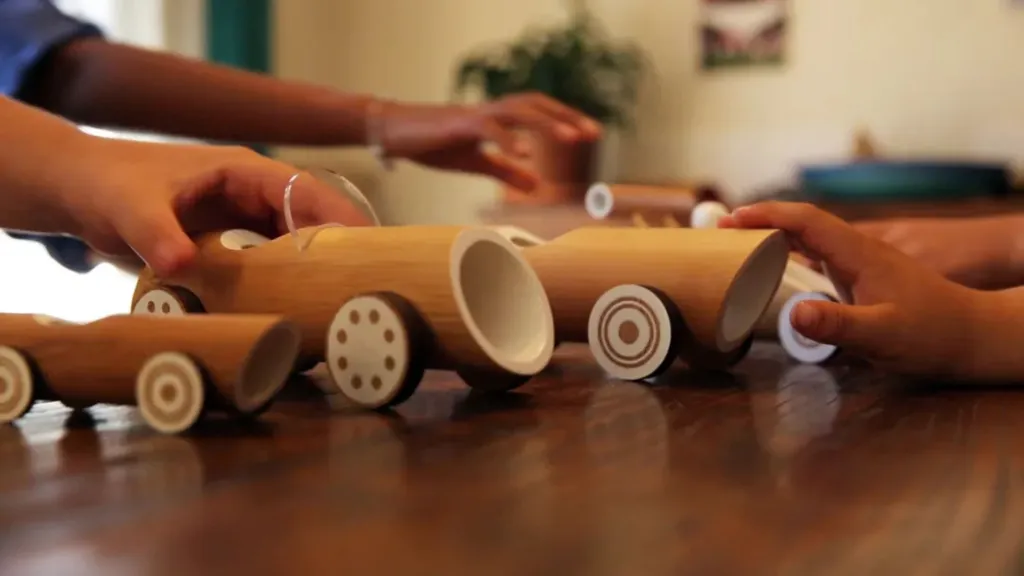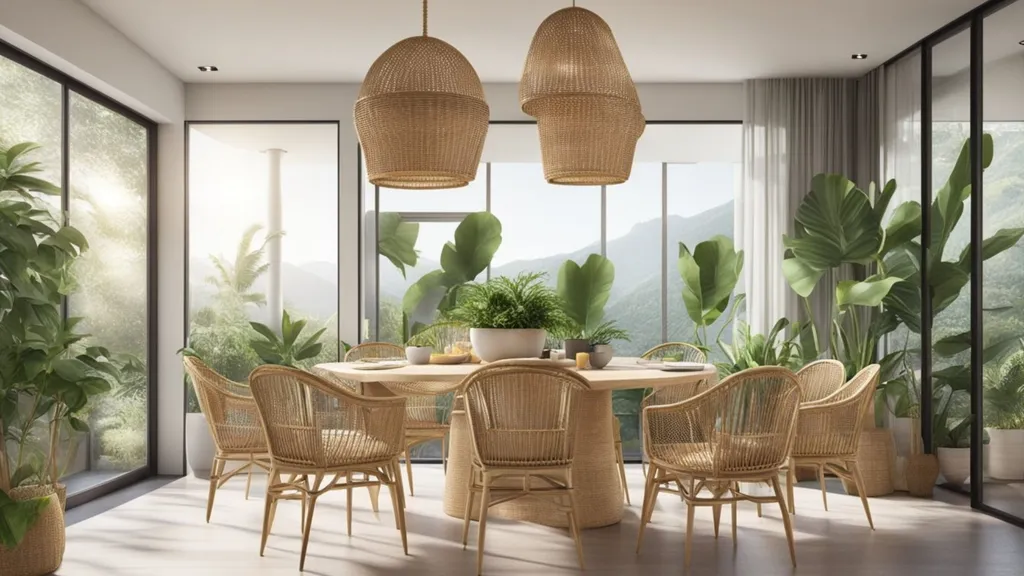Contents

In an era where sustainability and eco-conscious choices define global commerce, rattan and bamboo have emerged as shining examples of nature’s finest offerings. These renewable materials, celebrated for their versatility and environmental benefits, are capturing the attention of international markets. From the lush forests of Southeast Asia to the bustling marketplaces of Europe and North America, rattan and bamboo are not just materials—they are symbols of a greener, more sustainable future. This blog explores the dynamic world of rattan and bamboo exports, spotlighting Vietnam’s pivotal role, the economic and environmental impacts, and the bright prospects for these remarkable resources.
The Rising Tide of Rattan and Bamboo Exports
The global demand for rattan and bamboo is soaring, driven by a growing appetite for sustainable, eco-friendly products. As consumers and industries prioritize materials that align with environmental values, these natural resources have found their place in sectors ranging from furniture and home décor to construction and textiles.
Market Growth: The bamboo market, valued at approximately USD 59.30 billion in 2021, is projected to grow at a compound annual growth rate (CAGR) of 4.5% through 2030, reaching USD 88.43 billion. Rattan, while more niche, is expected to climb from USD 890 million in 2023 to USD 1.2 billion by 2032, fueled by its unique aesthetic appeal.
Vietnam’s Ascendancy: Vietnam has positioned itself as a key player, with rattan and bamboo exports reaching USD 250.21 million in the first half of 2020, a 10.8% increase year-over-year. Leveraging Free Trade Agreements (FTAs), Vietnam is on track to surpass USD 1 billion in exports, showcasing its ability to thrive even amidst global challenges like the COVID-19 pandemic.
Global Appeal: Major importers like the USA, Turkey, and China are increasingly drawn to these materials for their sustainability and versatility, creating exciting opportunities for exporting nations.
Key Exporting Nations: Leading the Charge
Rattan: A Crafted Legacy
Rattan, prized for its flexibility and strength, is a cornerstone of the furniture and handicraft industries. The following countries lead the global rattan trade:
Indonesia: As the world’s largest rattan producer, accounting for 70% of global supply, Indonesia’s lush rainforests provide the ideal conditions for rattan cultivation. The country excels in both raw material exports and finely crafted furniture, blending tradition with modern design.
Vietnam: Vietnam has rapidly risen as a rattan export powerhouse, focusing on sustainable harvesting and innovative designs. Its strategic FTAs have opened doors to markets in Europe and North America, where eco-friendly rattan products are in high demand.
Philippines: Renowned for its high-quality craftsmanship, the Philippines specializes in value-added rattan products, from elegant furniture to intricate décor, appealing to consumers seeking authenticity.
Malaysia: Though smaller in scale, Malaysia combines modern technology with traditional methods to produce high-quality rattan goods, catering to global trends in sustainable design.
Bamboo: The Green Gold
Bamboo, often called “green gold,” dominates global markets with its rapid growth and diverse applications. Leading exporters include:
China: With 65% of global bamboo exports, China is the undisputed leader, producing everything from construction materials to textiles and décor. Its vast bamboo forests and advanced processing capabilities drive its dominance.
Vietnam: Vietnam’s bamboo industry is gaining momentum, supported by government initiatives and diverse species cultivation. The country’s eco-friendly bamboo products are increasingly popular in international markets.
India: Known as the “wooden grass,” bamboo in India supports industries like papermaking, construction, and handicrafts. Its strategic location enhances access to Middle Eastern markets.
Thailand: Thailand blends traditional craftsmanship with contemporary design, exporting both raw bamboo and finished products that resonate with global sustainability trends.
Economic Impacts: Empowering Communities
The rattan and bamboo trade extends far beyond commerce, profoundly impacting local economies, particularly in developing regions. These industries are vital for:
Income Generation: From cultivation to export, rattan and bamboo provide stable income sources for rural communities, supplementing agricultural earnings and fostering financial resilience.
Job Creation: These labor-intensive sectors offer employment across the supply chain, from harvesting to artisanal craftsmanship and export logistics. In Vietnam alone, thousands of jobs are created, empowering women and marginalized groups.
Poverty Alleviation: By diversifying income streams and providing training, these industries reduce economic vulnerability, improving living standards and fostering community empowerment.
Global Trade: The export boom contributes significantly to national GDPs, with countries like Vietnam and Indonesia reaping economic benefits that support infrastructure and social programs.
Sustainability: A Core Commitment
Sustainability is at the heart of the rattan and bamboo industries, ensuring that economic growth aligns with environmental stewardship.
Certifications: Standards like the Forest Stewardship Council (FSC) and ISO 23067:2022 ensure sustainable harvesting and quality, boosting consumer confidence and market access.
Environmental Benefits: Bamboo’s rapid growth and carbon sequestration capabilities make it a powerful ally in combating climate change, while rattan’s vine-like nature supports forest ecosystems and biodiversity.
Innovative Practices: Techniques like selective harvesting and agroforestry systems preserve resources, ensuring long-term availability while minimizing ecological impact.
Case Study: Vietnam’s Sustainable Success
In Vietnam, rattan weaving cooperatives exemplify sustainable practices. By adopting eco-friendly harvesting methods and providing artisans with training, these cooperatives produce high-quality, handwoven products that command premium prices in global markets. This approach not only preserves natural resources but also uplifts local artisans, blending cultural heritage with economic prosperity.
Global Market Demands: A Sustainable Shift
The global appetite for rattan and bamboo is driven by a shift toward eco-conscious consumerism:
Furniture and Décor: Rattan’s flexibility and bamboo’s durability make them ideal for stylish, sustainable furniture, appealing to consumers in North America and Europe.
Construction: Bamboo’s tensile strength and renewability position it as a green alternative in construction, from scaffolding to eco-friendly homes.
Textiles: Bamboo’s soft, antibacterial fibers are revolutionizing sustainable fashion, with growing demand for eco-friendly clothing and linens.
Emerging Markets: Regions like Africa and the Asia-Pacific are embracing bamboo for economic and environmental benefits, supported by organizations like INBAR.
Challenges and Solutions
Despite their promise, rattan and bamboo exports face challenges:
Trade Barriers: High tariffs and phytosanitary regulations increase costs. Solutions include negotiating favorable trade agreements and streamlining compliance processes.
Supply Chain Issues: Remote production areas often lack infrastructure. Investments in transportation and logistics can enhance efficiency.
Synthetic Competition: Cheaper synthetic alternatives pose a threat. Emphasizing the unique aesthetic and sustainability of natural materials through targeted marketing can counter this.
Future Prospects: A Green Horizon
The future of rattan and bamboo exports is bright, driven by innovation and sustainability:
Innovative Products: From bamboo bioplastics to hybrid rattan-metal designs, new applications are expanding market reach.
Policy Support: Harmonizing standards, supporting smallholder farmers, and investing in infrastructure will enhance export potential.
Technology: Digital platforms and traceability systems are streamlining trade, connecting producers directly with global buyers.
Conclusion: Vietnam’s Role in a Sustainable Future
As a leading exporter, Vietnam is at the forefront of the rattan and bamboo revolution, blending tradition with innovation to meet global demand. By prioritizing sustainability and leveraging its rich natural resources, Vietnam is not only opening doors to international markets but also paving the way for a greener, more prosperous future. The export of rattan and bamboo is more than a trade—it’s a commitment to sustainability, economic empowerment, and global collaboration.
Discover the beauty and versatility of Vietnam’s handcrafted rattan and bamboo products, and join us in building a sustainable tomorrow.





